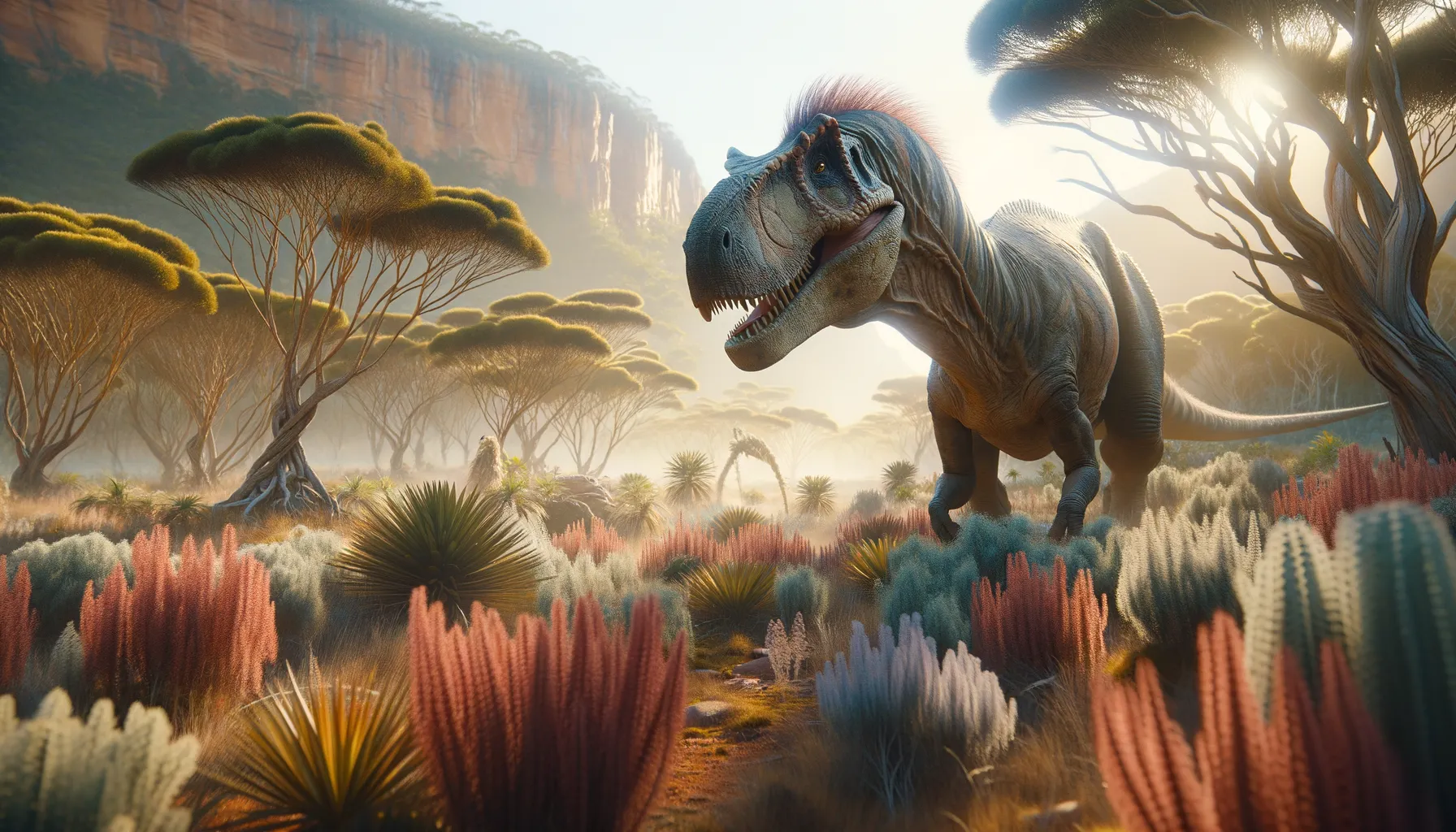
Muttaburrasaurus
The horned giant of prehistoric Australia.
Period
Cretaceous
Length
Measured around 25 to 30 feet long.
Height
Stood around 8 feet tall at the hips.
Weight
Weighed approximately 2.8 to 3.5 tons.
Muttaburrasaurus was a large herbivorous dinosaur that roamed what is now Australia during the Early Cretaceous period. Recognizable by its robust build and distinctive bony crest on its snout, it likely moved in herds grazing on vegetation. Its fossils, first discovered in the mid-20th century, have provided valuable insights into its life and environment. Known for being an ornithopod, this dinosaur is a key figure in understanding the diverse ecosystem of its time.
Diet
Muttaburrasaurus was herbivorous, primarily feeding on cycads, ferns, and conifers. Its beak-like mouth was well-adapted to clip and process tough plant material. The presence of cheek teeth indicates it was capable of chewing its food effectively.
Hunting
Being herbivorous, Muttaburrasaurus did not hunt other animals. Instead, it foraged for a variety of plant material in its lush, Cretaceous habitat. Its ability to move in herds offered some protection against predators.
Environmental challenges
Muttaburrasaurus lived during a time of significant environmental change, where fluctuating climates could impact the availability of vegetation. Predation by large carnivorous dinosaurs was a constant threat, requiring vigilance and group cooperation for protection. Competition for resources with other herbivores also posed challenges, especially in periods when food was scarce.
Speed
Moderate runner with likely bursts of speed.
Lifespan
Estimated to live around 20-30 years.
First discovery
Discovered in Queensland, Australia, in 1963.
Fun Facts
- Muttaburrasaurus was a plant-eating dinosaur that lived in Australia about 100 million years ago.
- It was named after the town of Muttaburra in Queensland, where its fossils were first discovered in 1963.
- This dinosaur had a large, bulbous snout, which might have been used to produce sound, similar to how some birds use their beaks.
- Muttaburrasaurus was about 7 meters (23 feet) long, making it one of the larger dinosaurs of its time in Australia.
- Fossils of Muttaburrasaurus have shown that it had powerful back legs, suggesting it could walk on both two and four legs.
- It belonged to a group of dinosaurs known as ornithopods, which are typically characterized by their bird-like feet.
- The discovery of Muttaburrasaurus provided important insights into the diversity of dinosaur life in ancient Australia.
Growth and Development
Muttaburrasaurus likely hatched from eggs, growing rapidly to reach its large adult size. Evidence suggests that juveniles were more vulnerable to predators, needing the protection of the herd for survival. As it matured, Muttaburrasaurus developed strong limbs and a robust body capable of supporting its weight.
Habitat
Muttaburrasaurus inhabited wooded areas, often near rivers and floodplains where vegetation was abundant. Its environment was rich in plant life, providing ample food sources. Seasonal changes could bring about varying climates, from wet periods to drier stretches, influencing its habitat and food resources.
Interaction with other species
Muttaburrasaurus likely interacted with various other herbivorous dinosaurs, competing for plant resources. Its existence in herds might have facilitated mixed-species groups, enhancing protection against predators. Large theropods in the region posed significant threats, likely influencing its defensive behaviors.
Natural lifespan
Muttaburrasaurus had a natural lifespan of about 20 to 30 years.
Reproduction
Muttaburrasaurus laid eggs, possibly in nests constructed and guarded by the herd. The dinosaurs likely practiced communal nesting, enhancing the survival of the offspring. Parental care might have been similar to modern birds, with adults protecting the eggs and young.
Social behaviour
It is believed that Muttaburrasaurus lived in herds, providing safety in numbers against predators. Social interactions within the herd may have included cooperative behaviors, such as group foraging. Communication could have been facilitated through visual and possibly vocal signals.
Fossil locations
The first fossils of Muttaburrasaurus were found in Queensland, Australia, particularly around the Muttaburra region. These findings are significant for understanding southern hemisphere ecosystems during the Cretaceous period. Further discoveries in Australia have helped paint a clearer picture of its widespread presence in the region.
